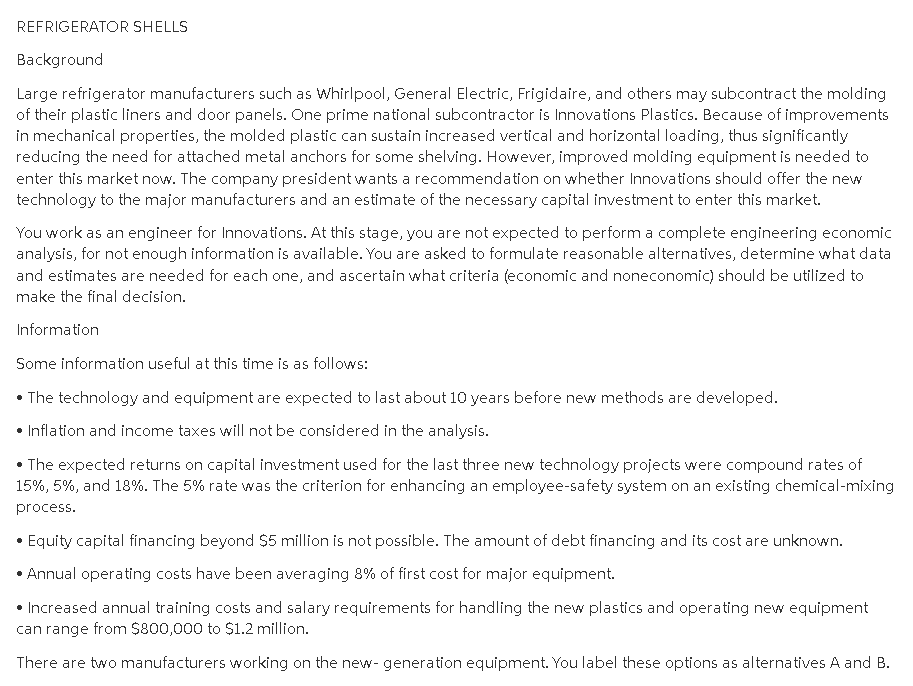REFRIGERATOR SHELLS Background Large refrigerator manufacturers such as Whirlpool, General Electric, Frigidaire, and others may subcontract the molding of their plastic liners and door panels. One prime national subcontractor is Innovations Plastics. Because of improvements in mechanical properties, the molded plastic can sustain increased vertical and horizontal loading, thus significantly reducing the need for attached metal anchors for some shelving. However, improved molding equipment is needed to enter this market now. The company president wants a recommendation on whether Innovations should offer the new technology to the major manufacturers and an estimate of the necessary capital investment to enter this market. You work as an engineer for Innovations. At this stage, you are not expected to perform a complete engineering economic analysis, for not enough information is available. You are asked to formulate reasonable alternatives, determine what data and estimates are needed for each one, and ascertain what criteria (economic and noneconomic) should be utilized to make the final decision. Information Some information useful at this time is as follows: The technology and equipment are expected to last about 10 years before new methods are developed. Inflation and income taxes will not be considered in the analysis. The expected returns on capital investment used for the last three new technology projects were compound rates of 15%, 5%, and 18%. The 5% rate was the criterion for enhancing an employee-safety system on an existing chemical-mixing process. Equity capital financing beyond $5 million is not possible. The amount of debt financing and its cost are unknown. • Annual operating costs have been averaging 8% of first cost for major equipment. • Increased annual training costs and salary requirements for handling the new plastics and operating new equipment can range from $800,000 to $1.2 million. There are two manufacturers working on the new- generation equipment. You label these options as alternatives A and B.
1. Use the first four steps of the decision-making process to generally describe the alternatives and identify what economic-related estimates you will need to complete an engineering economy analysis for the president.
2. Identify any noneconomic factors and criteria to be considered in making the alternative selection.
3. During your inquiries about alternative B from its manufacturer, you learn that this company has already produced a prototype molding machine and has sold it to a company in Germany for $3 million (U.S.dollars). Upon inquiry, you further discover that the German company already has unused capacity on the equipment for manufacturing plastic shells.The company is willing to sell time on the equipment to Innovations immediately to produce its own shells for U.S.delivery. This could allow immediate market entry into the United States.Consider this as alternative C,and develop the estimates necessary to evaluate C at the same time as alternatives A and B.

Trending now
This is a popular solution!
Step by step
Solved in 2 steps









